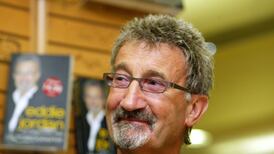Maurice John Turlough FitzGerald (MJT, or Turlough to family and friends) was born in Dublin in 1929. Ireland’s leading neuroanatomist came from unlikely origins. His mother, Clare O’Hare, was the daughter of a prosperous merchant family in Mayobridge, Co Down. With her father she toured the spas of Europe, managing in the process to study at University College Dublin, Cambridge, the Sorbonne, Heidelberg and Fribourg.
His father, when not tied up with body-building or billiards competitions, ran Atlantic College, where wireless telegraphy was taught, initially in Cahirciveen, then in various locations in Dublin before a final move to Leeson Park. Maurice and Clare met while she was at UCD, and they were eventually to elope.
Turlough FitzGerald was raised first in Dalkey, Co Dublin, where he initially attended Loreto Abbey. After the family moved to Leeson Park he studied at Belvedere College and (quite unhappily, is seems) at Clongowes Wood College.
Dispensation
He was ready to start his studies in medicine at the age of 16, but University College Dublin was not ready for someone so young. With a dispensation from Archbishop John Charles McQuaid, he was allowed into Trinity College Dublin. A year later he was whisked out again.
FitzGerald landed nearby, in UCD at Earlsfort Terrace. He excelled to an extent that must have exasperated his fellow students, repeatedly winning medals for academic excellence.
After UCD, FitzGerald spent a short time in clinical practice but he seems to have become aware fairly quickly that it was not for him. The deciding moment, he said, was the surprise on the face of a woman who fled a London outpatient clinic when he cut the wedding ring from her swollen finger – it was the wrong woman, it turned out.
His passion was for research and teaching, which he pursued first in University College Cork and on sabbatical in London before moving with his wife, Dr Maeve FitzGerald (née O’Donovan) and five young children to St Louis (Washington University). From there they moved to Seattle (University of Washington) before FitzGerald took the chair of anatomy at University College Galway (now NUI Galway) in 1968.
In research, FitzGerald specialised in the peripheral nervous system and singly or in collaboration published more than 100 papers. But it is in teaching that he most made his mark. Already during his time in the US his students had given him a “teacher of the year” award.
At UCG his very inventive mind found the “perfect condition” of few staff and meagre resources, so that he and Maeve – who was now a lecturer in functional histology in the department – launched themselves into finding a myriad of alternative means of instruction. Plasticine models, embedded in resin, served as teaching tools, and the children were recruited to model repetitive components such as villi in the intestines.
UCG’s audiovisual department became a key partner, and anatomy – in a development that seemed revolutionary at the time – soon had its own audiovisual room, where students studied diagrams of the macrostructure and microstructure of the body while listening to instructional material on cassette tapes.
FitzGerald’s healthy lifestyle – he was a very keen gardener – should have kept him fit. However, bouts of ill-health sometimes interfered with his teaching commitments. During the 1972 Olympics, for example, he distracted himself during his long hospital stay by watching Mark Spitz’s triumphs in the pool and recording to camera lectures for the coming term.
Spreading teaching
Both he and Maeve were also committed to spreading anatomy teaching in other countries, and they helped set up facilities in Tanzania and Zimbabwe. FitzGerald also acted as external examiner in Libya, Iraq and Pakistan, among other countries.
He was lead author of a number of textbooks, including Human Embryology with Maeve. His lasting published legacy is Clinical Neuroanatomy and Neuroscience. His co-author for the fourth edition, Jean Folan, was later succeeded by Estomih Mtui and Greg Gruener. It is now a classic in its sixth edition and in seven languages, and future editions will feature that rarest academic accolade, bearing the original author's name: they will be FitzGerald's Clinical Neuroanatomy and Neuroscience.
His beloved Maeve passed away in 2003. He is survived by his children Maurice, Peter, Mary Pat, Claire and Úna, and many grandchildren.









